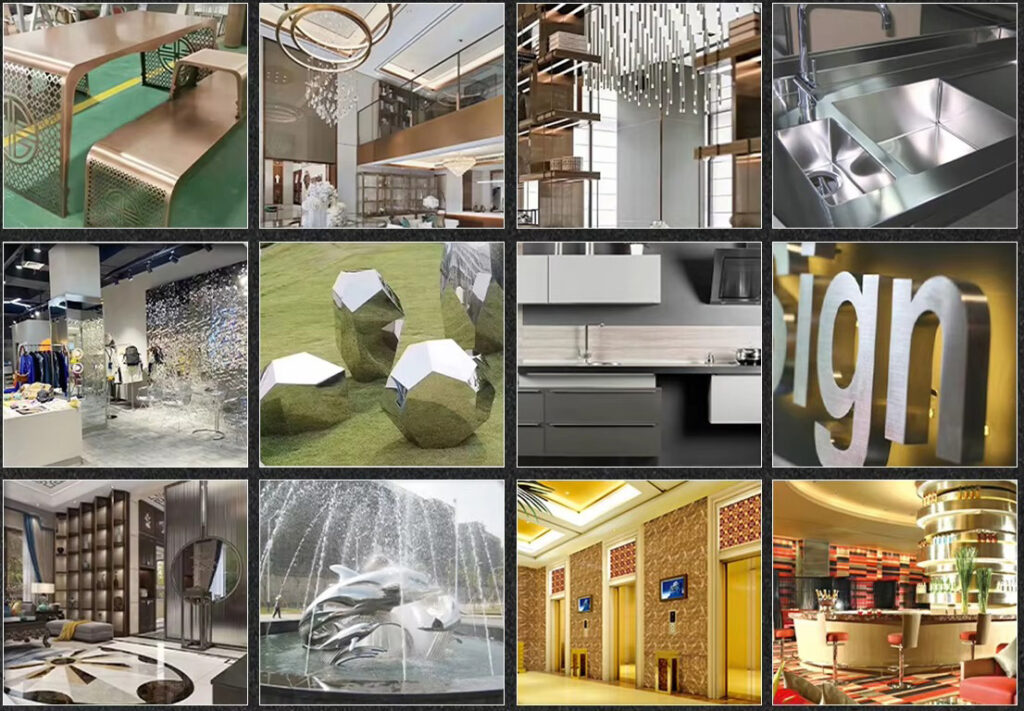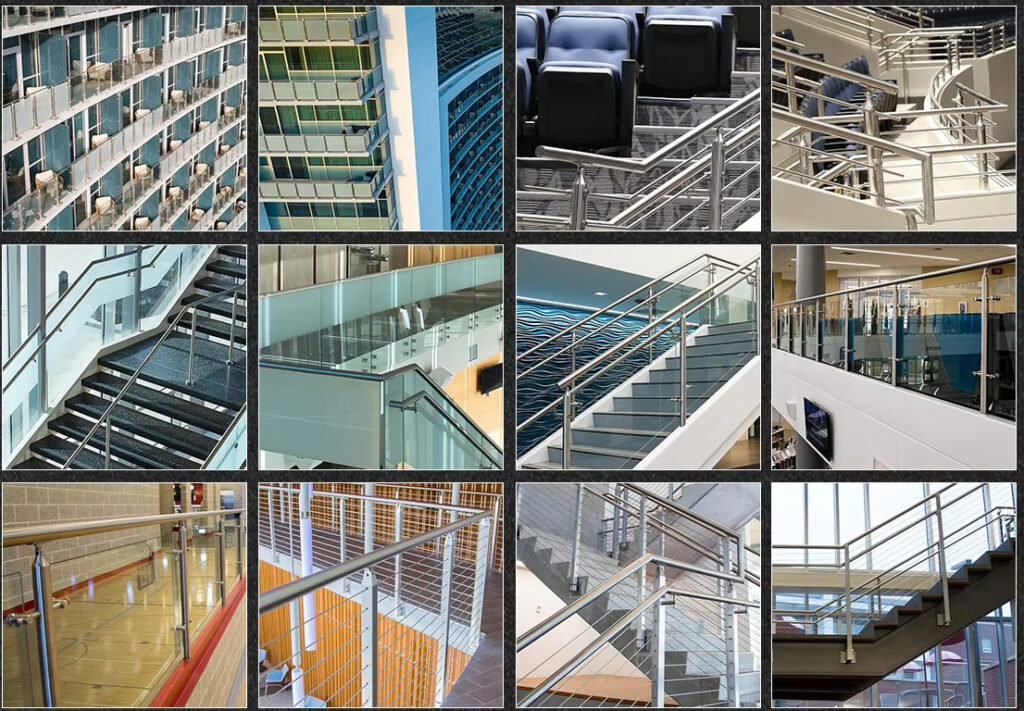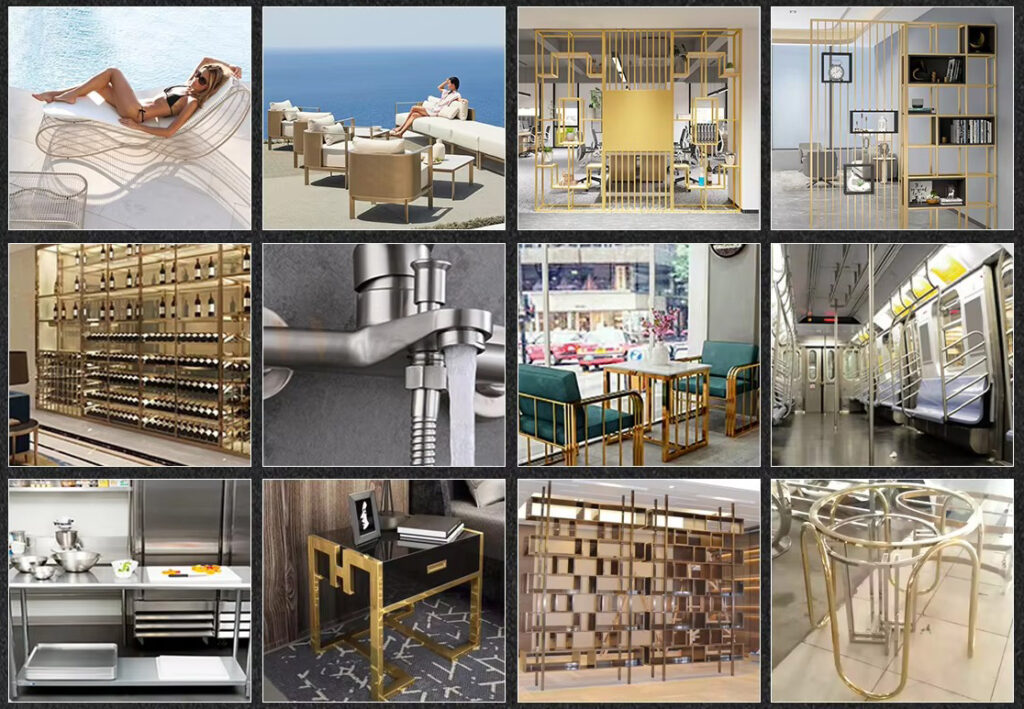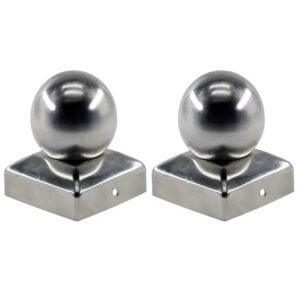
Post caps & end caps (round, square, decorative)
Post caps & end caps in 316L stainless steel. 23 years precision manufacturing for decorative applications worldwide. Request quote today.

Post caps & end caps in 316L stainless steel. 23 years precision manufacturing for decorative applications worldwide. Request quote today.
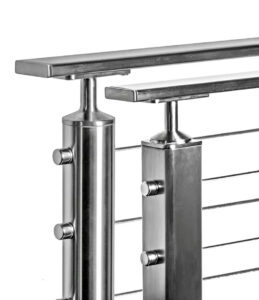
Square stainless steel posts in 304/316L grades. 23 years precision manufacturing for coastal projects worldwide. Request quote today.
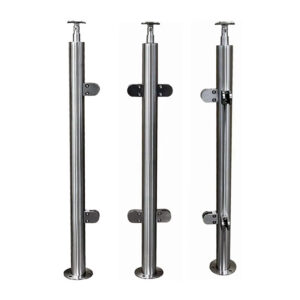
Stainless steel posts in 304/316L grades. 23+ years ODM fabrication for marine & commercial applications. Contact factory today.
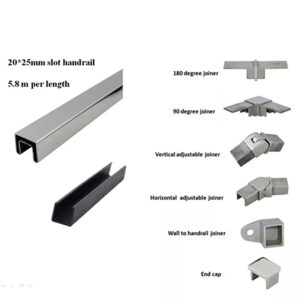
Square top rail components in 316L stainless steel. 23+ years precision manufacturing for global applications. Contact factory today.
Project-specific hardware in 316L stainless steel. 23 years delivering tailored solutions for specialized projects worldwide. Get factory quote today.
Non-standard size components in 316L stainless steel. 23+ years ODM manufacturing for unique sizing requirements globally. Contact us today.
| Specification | Our Stainless Steel Base Shoe Systems | Standard Aluminum Base Shoes | Competitive Advantage |
|---|---|---|---|
| Cladding Material | 304/316 Marine Stainless Steel | 6063-T6 Aluminum Anodized | Superior corrosion resistance and longevity |
| Structural Strength | 70,000+ PSI (316 grade) | 42,000 PSI maximum | 67% higher tensile strength |
| Corrosion Resistance | 500+ hours salt spray | 200 hours maximum | 150% superior marine environment performance |
| Operating Temperature | -40°C to +400°C | -30°C to +150°C | Extended thermal range capability |
| Glass Compatibility | 1/2″ to 3/4″ thickness | Limited thickness range | Universal glass accommodation |
| Surface Finish Options | Brushed, Mirror, Electropolished | Anodized limited colors | Superior aesthetic versatility |
| Maintenance Interval | 36+ months | 12-18 months | 200% longer service cycles |
| Service Life | 25+ years guaranteed | 10-15 years typical | 150% longer operational lifespan |
Superior Material Performance vs. Standard Aluminum Systems
Our stainless steel base shoe cladding delivers exceptional corrosion resistance compared to anodized aluminum alternatives that suffer coating degradation under UV exposure and salt spray. While aluminum anodizing requires renewal every 10-15 years, our 304/316 stainless steel cladding provides permanent finish integrity that eliminates refinishing costs and maintains architectural aesthetics indefinitely.
Enhanced Structural Integrity and Load Distribution
The precision-engineered aluminum structural core with stainless steel cladding provides optimal load distribution for glass panels ranging from 1/2″ to 3/4″ thickness. Unlike traditional aluminum-only systems that experience thermal expansion issues, our stainless steel cladding maintains dimensional stability across extreme temperature ranges, preventing glazing compound failure and glass stress concentration.
Advanced Glazing Technology Integration
Our base shoe systems accommodate both wet and dry glazing methods, with precision-machined channels that ensure perfect glass alignment and weather sealing. The stainless steel cladding protects the critical sealing interfaces from environmental degradation, while aluminum alternatives experience galvanic corrosion when paired with stainless steel glass clips and fasteners.
Architectural Design Flexibility
Available in brushed, mirror, and electropolished finishes, our stainless steel cladding systems complement modern architectural elements while providing seamless integration with existing stainless steel handrails and hardware. The material compatibility eliminates the aesthetic mismatch common when combining aluminum base shoes with stainless steel top rails.
Luxury Residential Balcony Installations
High-end waterfront homes require 316 marine-grade stainless steel cladding on base shoe systems to withstand salt spray exposure exceeding 1,000 hours annually. Our systems maintain pristine appearance and structural integrity where anodized aluminum alternatives show corrosion and discoloration within 18-24 months of coastal installation.
Commercial Office Building Atriums
Corporate facilities with multi-story glass railings utilize 304 stainless steel clad base shoes that complement architectural finishes while providing 25+ year service life. The systems eliminate the maintenance downtime and refinishing costs associated with aluminum anodizing failure in high-traffic commercial environments.
Hotel and Resort Terrace Systems
Hospitality venues install electropolished stainless steel base shoes on rooftop dining areas where appearance and hygiene are critical. Our systems resist atmospheric staining and provide easy cleaning protocols that maintain guest experience standards where aluminum systems would require frequent maintenance.
Healthcare Facility Glass Partitions
Medical environments demand antimicrobial stainless steel cladding on base shoe systems that support privacy glass installations. Our electropolished finishes eliminate bacterial harbor points while providing the chemical resistance required for hospital-grade sanitization protocols.
Industrial Platform Glass Guards
Manufacturing facilities with elevated walkways require heavy-duty stainless steel clad base shoes that resist chemical vapor exposure and temperature fluctuations from process equipment. Our systems maintain structural integrity in environments where aluminum anodizing would fail within 2-3 years.
Marina and Yacht Club Installations
Waterfront dining facilities install marine-grade base shoe systems on floating dock railings subjected to constant moisture and salt exposure. Our 316 stainless steel cladding eliminates the galvanic corrosion issues that cause premature failure in aluminum systems paired with stainless steel hardware.
What’s the difference between structural aluminum base shoes and stainless steel cladding systems?
The structural aluminum base shoe provides the primary load-bearing capacity and glass retention system, while stainless steel cladding offers superior aesthetics, corrosion resistance, and longevity. Our systems combine 6063-T6 aluminum structural performance with 304/316 stainless steel surface protection, delivering optimal engineering and architectural performance where all-aluminum systems would degrade.
How do 304 and 316 stainless steel grades compare for base shoe cladding applications?
304 stainless steel provides excellent performance for indoor and mild outdoor environments, offering superior aesthetics and corrosion resistance compared to anodized aluminum. 316 grade includes molybdenum for enhanced chloride resistance, making it essential for coastal properties within 5 miles of saltwater, pool areas, and marine environments where salt spray exposure exceeds 200 hours annually.
Can stainless steel base shoe systems accommodate different glass thicknesses and types?
Yes, our systems accommodate 1/2″, 5/8″, and 3/4″ glass thicknesses with both tempered and laminated glass types. The precision-machined channels provide optimal support and weather sealing across all glass specifications, while maintaining compatibility with wet and dry glazing methods required by different architectural applications and building codes.
What installation advantages do stainless steel clad base shoes provide compared to aluminum alternatives?
Our systems allow installation from the interior side only, eliminating scaffolding requirements for elevated installations. The stainless steel cladding provides enhanced grip for installation tools and resists damage during construction activities. Pre-drilled mounting holes every 12 inches accelerate installation while maintaining structural integrity superior to field-drilled aluminum systems.
How do maintenance requirements compare between stainless steel and aluminum base shoe systems?
Stainless steel clad systems require only periodic cleaning with pH-neutral solutions every 6-12 months depending on environmental exposure. No anodizing renewal, coating touch-up, or refinishing is required. Aluminum systems require anodizing inspection, touch-up, and potential re-anodizing every 10-15 years, plus more frequent cleaning to prevent permanent staining.
What building codes and safety standards govern base shoe glass railing installations?
Base shoe systems must comply with IBC Section 1013.3 guard requirements for 200-pound concentrated loads and 50 pounds per linear foot uniform loads. Glass must be fully tempered or laminated safety glass meeting ASTM C1048 standards. Our systems are tested to ASTM E935 and E985 standards with documented load capacity exceeding code requirements by 100% safety margins.
Are there design limitations for stainless steel base shoe systems in different architectural applications?
Our systems accommodate straight runs, curved installations up to 30-degree radius, and corner transitions with specialized connecting hardware. Maximum glass panel widths depend on wind load calculations but typically range from 4-12 feet without intermediate support. The stainless steel cladding can be custom-formed for unique architectural profiles while maintaining structural integrity.
How do stainless steel base shoe systems perform in extreme weather and seismic conditions?
Stainless steel maintains structural properties from -40°C to +400°C, far exceeding aluminum limitations in thermal cycling environments. Seismic applications benefit from the superior fatigue resistance that prevents crack propagation common in aluminum systems. The material ductility provides enhanced performance in earthquake zones where brittle anodized coatings would fail.
Building Code Compliance Standards
Stainless steel base shoe systems comply with IBC Section 1013.3 guard requirements and ASCE 7 wind load provisions for structural glass installations. Load testing follows ASTM E935 and E985 standards with documented proof testing at 1.5 times design loads. Glass specifications meet ASTM C1048 safety glazing requirements for tempered and laminated panels in guard applications.
Material Specifications and Certifications
Structural aluminum components conform to ASTM B221 6063-T6 specifications with certified mill test certificates. Stainless steel cladding materials meet ASTM A240 specifications for 304/316 grades with documented chemical composition and mechanical properties. Marine-grade installations include NACE SP0169 atmospheric corrosion compliance for coastal environments.
Glazing System Standards
Wet glazing systems utilize ASTM C920 structural glazing sealants with 25-year weatherproofing warranties. Dry glazing methods employ EPDM gaskets conforming to ASTM D1056 specifications for compression set resistance. Glass retention systems meet ASTM E330 structural performance requirements for wind load resistance and water infiltration prevention.
Corrosion Resistance Testing
Salt spray testing per ASTM B117 standards demonstrates 500+ hour performance for 316 grade cladding systems. Pitting resistance evaluation follows ASTM G48 Method A for chloride exposure conditions. Atmospheric exposure testing verifies long-term performance in urban, industrial, and marine environments where aluminum anodizing shows rapid degradation.
Quality Assurance and Manufacturing Standards
Production follows ISO 9001:2015 quality management with documented material traceability and inspection procedures. CNC machining maintains ±0.5mm tolerance for precision fit with structural glass panels. Surface finish standards achieve 32 Ra maximum for brushed finishes and 8 Ra maximum for mirror polish applications.
Installation Safety and Professional Certification
Installation procedures meet OSHA 1926.502 fall protection standards for temporary and permanent railing systems. Professional installation certification available through certified glazing contractor programs for complex commercial applications requiring engineered calculations and permit approval. Structural engineering documentation provided for projects exceeding standard residential applications.
